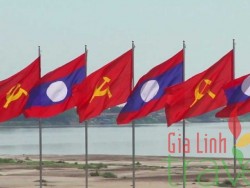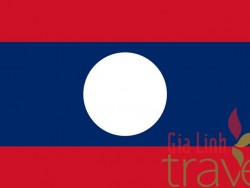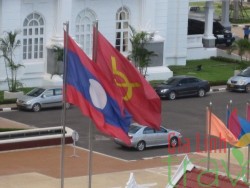Laos Government
Laos Government
Laos Government Laos Government As a traditional society until 1975, Laos was a conservative monarchy, dominated by a small number of powerful families. In 1975 it was transformed into a communist oligarchy, but its social makeup remained much the same. In the 600-year-old monarchy, the Lao king ruled from Louangphrabang (Luang Prabang), while in other regions there were families with royal pretensions rooted in the royal histories of Champasak (Bassac), Vientiane (Viangchan), and Xiangkhoang (Tran Ninh). They were surrounded by lesser aristocrats from prominent families who in turn became patrons to clients of lower status, thus building a complex network of allegiances. The king reigned from Louangphrabang but did not rule over much of the outlying regions of the country. In December 1975, with the declaration of the Lao People’s Democratic Republic (LPDR, or Laos), the king abdicated. Although Laos was reorganized as a communist “people’s democracy,” important vestiges of traditional political and social behavior remained. The aristocratic families were shorn of their influence, but a new elite with privileged access to the communist roots of power emerged, and clients of lower status have searched them out as patrons. In addition, some of the old families, who had links to the new revolutionary elite, managed to survive and wield significant influence. As newly dominant elites replaced the old, they demanded a similar deference. Lao Loum, or lowland Lao, families continue to wield the greatest influence. Despite the rhetoric of the revolutionary elite concerning ethnic equality, Lao Theung, or midland Lao, and Lao Sung, or upland Lao, minorities are low on the scale of national influence, just as they were in pre1975 society. However, the power of the central government over the outlying regions has remained tenuous, still relying upon bargains with tribal chieftains to secure the loyalty of their peoples. Although manifesting many of the characteristics of a traditional Lao monarchy dominated by a lowland Lao Buddhist elite, the country has exhibited many of the characteristics of other communist regimes. It has shown a similar heavy bureaucratic style, with emphasis within the bureaucracy on political training and long sessions of criticism and self-criticism for its civil servants. Laos imported from its Vietnamese mentor the concept of reeducation centers or “seminar camps,” where, during the early years in power, thousands of former Royal Lao Government (RLG) adversaries were incarcerated. However, this communist overlay on traditional society has been moderated by two important factors: Lao Buddhism and government administrative incompetence in implementing socialist doctrine. Thus, what emerged in Laos has been a system aptly labeled by Prince Souvanna Phouma, former prime minister of the RLG, as “socialisme à la laotienne” (Lao-style socialism). The mélange of traditional politics, accompanied by patronclient relations, with communist-style intra-institutional competition, has produced a unique political culture. Power centers tend to cluster around key personalities, and those in power become targets of opportunity for members of their extended family and friends. Constitutional framework Since its establishment in December 1975, the Lao People’s Democratic Republic (LPDR) has been effectively controlled by the communist Lao People’s Revolutionary Party (LPRP). This party, in alliance with the Vietnamese communists, carried out the revolution that ended in its seizure of power and the abolition of the monarchy. Top government positions—beginning with the president, who is head of state, and the prime minister, who is the head of government—are selected from high-ranking party members who constitute a Central Committee with the Politburo at the head. The constitution of 1991, which declares the party to be the “leading nucleus” of the political system, provides for a National Assembly, the members of which are elected to five-year terms. The National Assembly elects the president and vice president and approves presidential appointments of the prime minister and members of the cabinet (Council of Ministers). The president and ministers serve five-year terms. Political process Laos is a communist country, and the only legal political party is the LPRP. Although the party controls all branches of government, independent candidates have on occasion been elected to the National Assembly. A handful of groups stand in armed opposition to the communist government, some of them associated with particular ethnic communities (e.g., the Hmong); others operate from outside the country. The number of women elected to the National Assembly has been increasing since the 1990s, and, by the early 21st century, women had become a significant minority in the legislature. Laos has universal adult suffrage for all citizens who are at least 18 years old.


